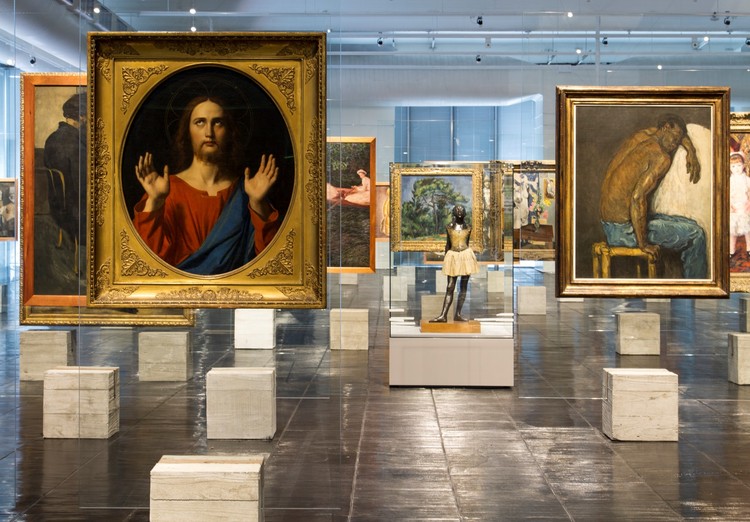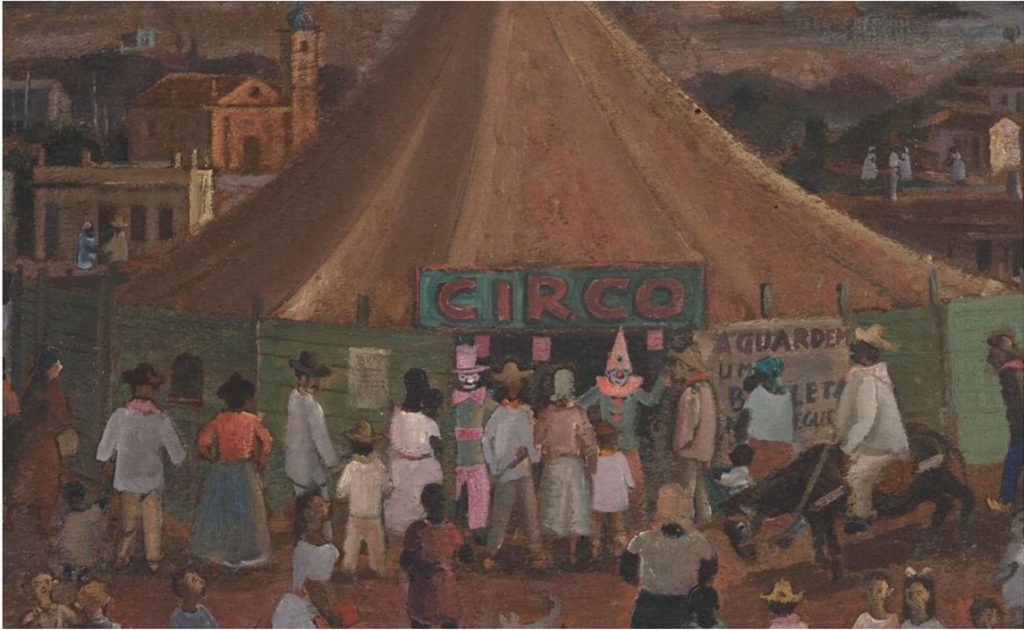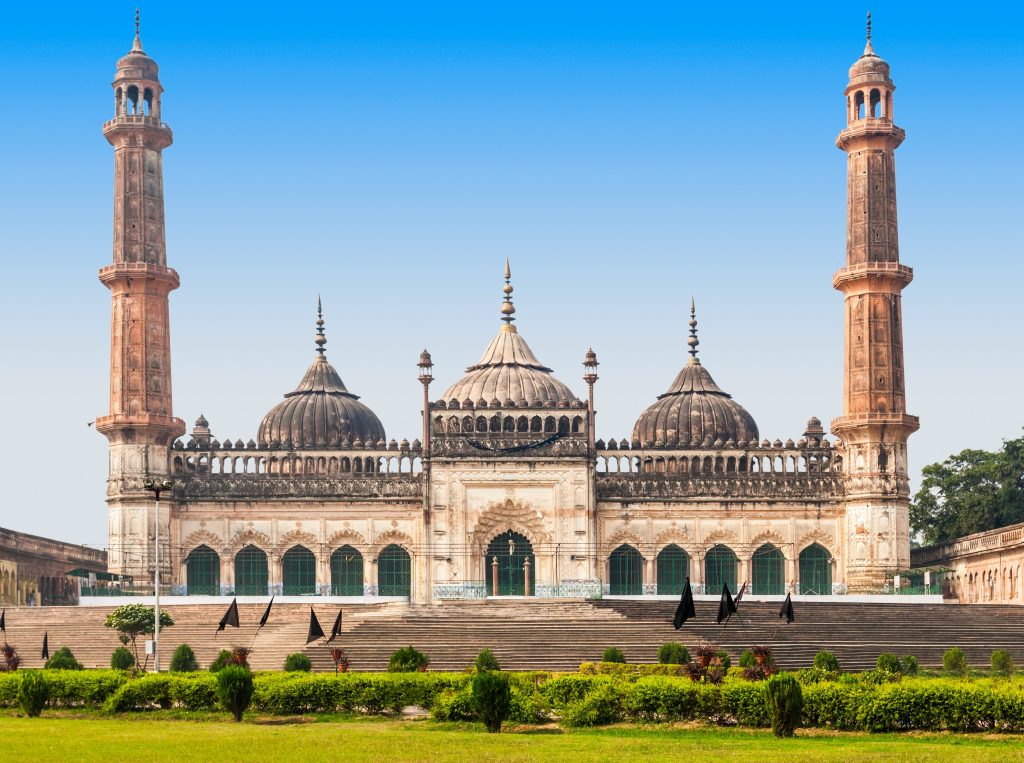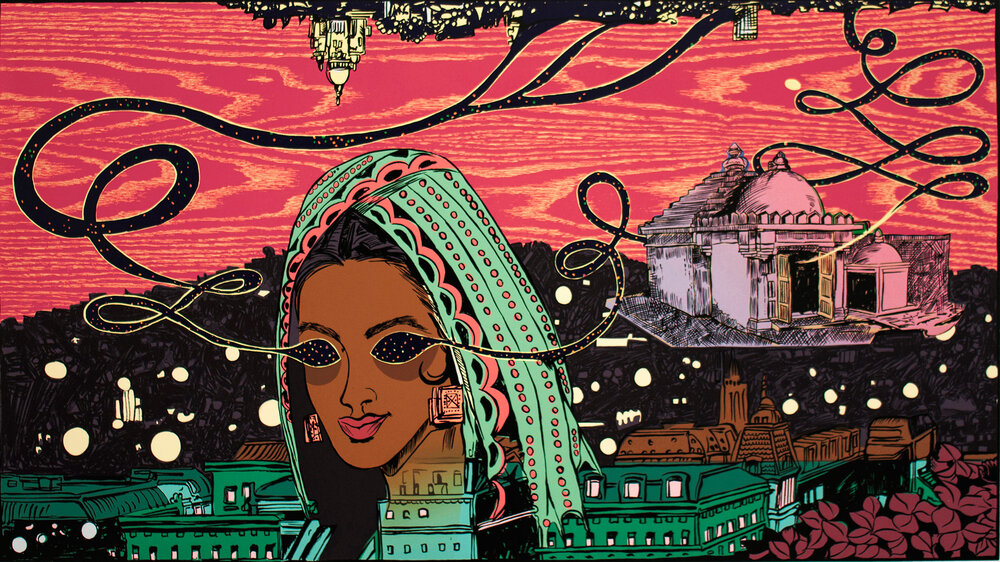The Venice Biennale 2024 showcased the profound talents of three Brazilian masters whose works significantly shaped the artistic landscape of their adopted country. This brought together the distinct yet interconnected legacies of Fulvio Pennacchi, Lina Bo Bardi, and Maria Bonomi. Through their unique mediums and visionary approaches, each artist contributed to the rich tapestry of Brazilian art, blending their diverse backgrounds with the vibrant cultural milieu of Brazil.
Fulvio Pennacchi
Fulvio Pennacchi, an Italian immigrant who found his new home in São Paulo, is a testament to the enduring influence of cultural exchange in art. Moving away from the early twentieth-century trends towards abstraction, Pennacchi developed a distinctive figurative style that vividly encapsulated everyday life and popular culture in Brazil. His work “O Circo” (1942) is a quintessential example of his unique approach, illustrating the charm and vibrancy of traditional Brazilian rural shows.

In “O Circo,” Pennacchi employs a palette dominated by ocher tones to evoke the warmth and earthiness of the Brazilian landscape. The central element of the painting is a circus tent, a green and brown circular structure prominently featuring the word “CIRCUS.” This tent, a beacon of entertainment in rural Brazil, captures the essence of the traditional shows that were a staple of community life. Adjacent to the tent’s entrance, a sign invites the public to wait, creating a sense of anticipation and engagement. In front of this entrance, two clowns with faces painted white gaze directly at the observer, bridging the gap between the viewer and the scene, inviting them into this slice of rural festivity.
The painting is populated with various characters, predominantly people of colour, reflecting the diverse social fabric of rural Brazil. These figures, some depicted from behind or in profile, add a dynamic sense of movement and life to the scene. Among them, a donkey carrying a farmer crosses the foreground, a nod to the agrarian lifestyle that defined much of rural Brazil. The ground beneath them is depicted as “red earth,” a term used by Italian immigrants who worked on coffee plantations to describe the distinctive soil of certain Brazilian regions. This detail adds geographical specificity to the painting and highlights Pennacchi’s attentiveness to the environment around him.
In the “O Circo” background, Pennacchi paints a serene dusk landscape with mountains, houses, and a church. This setting frames the lively scene in the foreground, juxtaposing the countryside’s stillness with the circus’s vibrancy. It reflects Pennacchi’s ability to capture the duality of rural life—its tranquillity and moments of communal joy. Pennacchi’s portrayal is deeply rooted in his direct observations of his surroundings, demonstrating his role as an interpreter of a rural and famous Brazil. His art transcends mere depiction; it encapsulates the spirit and culture of the people he lived among, offering a window into their lives, traditions, and environment.
The presentation of Fulvio Pennacchi’s work at the Venice Biennale 2024 is a historic milestone, marking the first time his art is showcased at this prestigious event. This exhibition allows a global audience to engage with Pennacchi’s rich and evocative portrayal of Brazilian life, highlighting his significant contribution to art. Pennacchi’s work serves as a bridge between cultures, illustrating how an immigrant artist can profoundly impact and enrich the artistic landscape of their adopted country. His ability to capture the essence of rural Brazil with authenticity and sensitivity ensures his place in the annals of art history.
Lina Bo Bardi
Lina Bo Bardi, an Italian-born architect who became one of Brazil’s most influential figures in the arts and architecture, is being celebrated for the first time at the Biennale Arte 2024. Her remarkable journey began with her architectural studies in Rome, leading to a transformative move to Brazil in 1946. In São Paulo, Bo Bardi’s multifaceted career flourished as she worked as an architect and magazine editor, graphic designer, furniture designer, set designer, curator, and writer.

Two of Bo Bardi’s most iconic buildings are the Museu de Arte de São Paulo Assis Chateaubriand (MASP) and the SESC Pompéia. MASP, inaugurated in 1968, is a testament to Bo Bardi’s innovative spirit. The building’s striking design features a glass and concrete structure suspended by four lateral red pillars, creating a visually compelling and functional space that has become a symbol of São Paulo. Bo Bardi’s vision for this space was to create an inclusive environment that fosters community interaction and cultural exchange. Her approach was to embrace the raw, industrial elements of the existing structure, blending them with new, dynamic spaces that reflect the diversity and energy of São Paulo.
One of Bo Bardi’s most legendary contributions to museum design is the “glass easel,” a revolutionary device conceived for MASP’s picture gallery. Unveiled at the museum’s opening in 1968, the glass easel consists of a thick glass plate inserted into a concrete cube, forming a self-supporting transparent panel onto which a picture is hung. This innovative display method allows the artwork to be viewed without any immediate historical contextualization, as the label is affixed to the back of the glass panel. Bo Bardi’s system was influenced by the exhibition displays of Franco Albini in Milan during the 1940s. Her innovative approach has left a lasting impact on contemporary exhibition design.
In 2021, Lina Bo Bardi was posthumously awarded the Biennale Architettura’s Gold Lion for Lifetime Achievement, recognising her profound influence on architecture and design. Her work continues to inspire architects and designers worldwide, celebrating her legacy as a pioneer who challenged traditional norms and embraced the potential of architecture to transform society. The Biennale Arte 2024 marks a significant milestone as it presents the work of Lina Bo Bardi for the first time. This exhibition will highlight her extraordinary contributions to architecture, design, and cultural heritage, showcasing her innovative spirit and enduring impact. Visitors will be able to engage with Bo Bardi’s visionary designs, including her iconic glass easels, and explore the profound ways her work continues to resonate in the contemporary world.
Through this tribute, the Biennale Arte honours Lina Bo Bardi’s legacy and invites a new generation to discover and be inspired by her groundbreaking approach to architecture and design. Bo Bardi’s work remains a powerful reminder of the transformative power of creativity and the enduring importance of challenging conventions in pursuing innovative and inclusive spaces.
Maria Bonomi
Maria Bonomi’s engraving and sculptural practice is deeply rooted in the engraved matrix of the woodcut, a foundational element of her artistic expression. In the 1960s and 1970s, Bonomi sought to expand her knowledge of woodblock printing, a pursuit that led her to the Pratt Institute, where she studied under the guidance of Seong Moy. Her quest for mastery did not stop there; she also travelled extensively to Japan, Maoist China, and the Amazon to study the diverse techniques and traditions of woodblock printing practised in these regions.

One of the significant works from this period of exploration and transformation is Pedra Robat (1974), which forms part of a series created following these impactful journeys. During this time, Bonomi’s approach to woodcut printing departed from conventional methods. She utilized two huge and heavy wooden matrices, which she engraved using techniques inspired by the jade sculptures she observed in Beijing. These sculptures were products of skills refined over generations of stonemasons, a lineage of craftsmanship that profoundly influenced Bonomi’s technique.
The process of creating Pedra Robat involved layering the imprints of each matrix, resulting in a print that defies the typical sharp edges associated with woodcuts. Instead, Bonomi’s prints seem to vibrate with kinetic energy, a distinctive characteristic of her woodcut style. This sense of movement and vitality in her work can be attributed to the dynamic interaction between the layered imprints and the textures of the engraved matrices.
A crucial element of Bonomi’s work is the exposure of the wooden blocks at the base of the print. This choice highlights the matrices’ physical presence and foundational role in creating the artwork. It underscores Bonomi’s endless research and experimentation with the engraved surface, which led her to develop the concept of an “expanded woodcut.” This vision transcends traditional printmaking, transforming the engraved matrices into monumental sculptural installations often serving as public commissions.
Bonomi’s expanded woodcuts are not merely prints but are integrated into the architectural and public spaces where they are installed. These installations reveal her innovative approach to art, where the boundaries between printmaking, sculpture, and architecture blur. These works’ monumental scale and public nature invite a broader audience to engage with the intricacies of woodcut printing, elevating the engraved matrix from a reproduction tool to a centrepiece of artistic expression.
Through her extensive travels, studies, and relentless experimentation, Maria Bonomi has redefined woodblock printing, pushing its limits and expanding its possibilities. Her work, characterized by its vibrant energy and monumental scale, is a testament to her dedication to the craft and her innovative spirit. Pedra Robat and her other expanded woodcuts continue to inspire and challenge the conventions of printmaking, highlighting the enduring relevance and versatility of the woodcut medium in contemporary art.
Feature image: Work by Fulvio Pennacchi / credit: biennale 24

Jain Syriac Babu is a Kerala-born, Italy-based theatre artist and art enthusiast.






